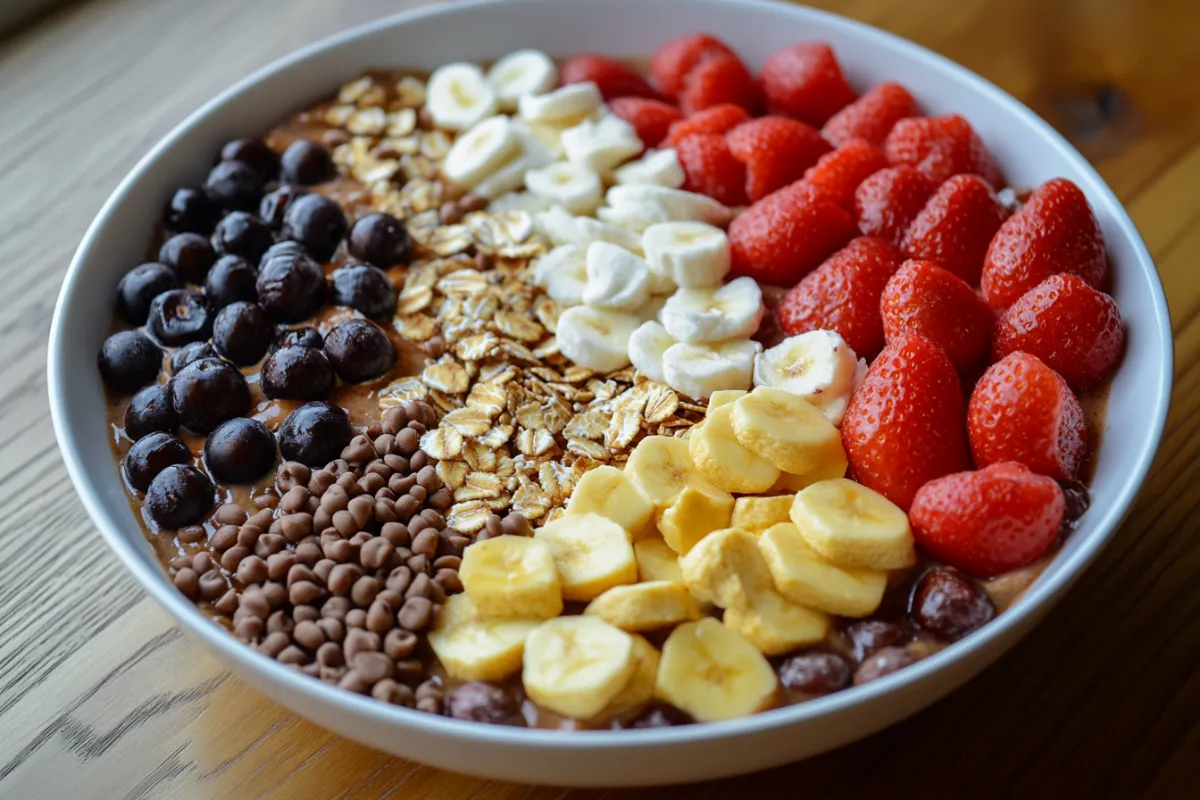Protein Cereal: The Ultimate Guide to a High-Protein Breakfast
Protein cereal has become a game-changer in the world of breakfast options, offering a nutritious and delicious way to start your day with an extra boost of protein. This comprehensive guide will explore everything you need to know about protein cereal, including its benefits, types, and how to incorporate it into your diet creatively. Whether you’re an athlete, a busy professional, or someone looking to improve their diet, protein cereal can be a valuable addition to your breakfast routine.
1. Introduction to Protein Cereal
Protein cereal is more than just a breakfast food—it’s a powerful tool for those looking to improve their nutrition. Traditional cereals are often loaded with sugar and lack sufficient protein, leading to energy crashes and hunger pangs. In contrast, protein cereals are designed to keep you full, energized, and satisfied throughout the morning. By choosing a high-protein option, you can enhance your diet and support your fitness goals.
For those interested in more nutritious breakfast options, read our article on Ancient Grains in Healthy Cereal: Nutritional Benefits, where we explore the health benefits of incorporating ancient grains into your diet.
2. Why Choose Protein Cereal Over Regular Cereal?
2.1. Protein Content and Satiety
One of the main advantages of protein cereal is its ability to keep you full for longer periods. Protein takes longer to digest than carbohydrates, which means it can help stabilize your blood sugar levels and prevent the mid-morning slump often associated with high-sugar cereals.
2.2. Nutritional Benefits
Protein cereals generally have a more balanced macronutrient profile compared to regular cereals. They contain higher amounts of protein, moderate levels of carbohydrates, and are often lower in sugar. This makes them an ideal choice for anyone looking to maintain steady energy levels and reduce their overall sugar intake.
2.3. Supporting Weight Management and Muscle Building
If you’re aiming to lose weight or build muscle, protein cereal can be a valuable addition to your diet. Protein is essential for muscle repair and growth, and it also helps you feel full, which can aid in weight management by reducing the likelihood of overeating.
For a more detailed look at balanced diets, check out our guide on Healthy Dinner Ideas: Top Foods for a Nutritious Evening Meal.
3. Types of Protein Cereals Available
3.1. Whole Grain and Multigrain Options
Whole grain and multigrain protein cereals are packed with fiber, vitamins, and minerals. These cereals use ingredients like oats, barley, and quinoa, which are not only high in protein but also provide complex carbohydrates that release energy slowly, keeping you fuller for longer.
3.2. Low-Carb and Keto-Friendly Options
For those following a low-carb or keto diet, protein cereals that are low in carbohydrates are a great choice. These cereals often use alternative ingredients like almond flour or coconut flour to provide texture and flavor without the high carb content of traditional cereals.
3.3. Vegan and Plant-Based Protein Cereals
Vegan protein cereals typically use plant-based proteins such as pea protein, soy protein, or hemp protein. These cereals are ideal for those looking to avoid animal products while still getting a good amount of protein in their breakfast.
3.4. High-Fiber Protein Cereals
High-fiber protein cereals are a great way to support digestive health. Fiber helps regulate digestion and can reduce the risk of constipation. Look for cereals that include ingredients like flaxseeds, chia seeds, or psyllium husk for an added fiber boost.
For more on high-fiber breakfast choices, you might also be interested in Sauteed Zucchini and Mushrooms.
3.5. Protein-Enhanced Granola
Protein granola is another popular option. It combines the crunch of traditional granola with the added benefits of protein, making it a perfect topping for yogurt or a nutritious snack on its own.
4. How to Choose the Best Protein Cereal for Your Needs
Choosing the right protein cereal can be overwhelming with so many options available. Here are some tips to help you make an informed decision.
4.1. Reading the Nutrition Label
When selecting a protein cereal, always read the nutrition label. Look for cereals that provide at least 10 grams of protein per serving and have low levels of added sugars. Check the ingredient list for whole food ingredients and avoid those with a long list of artificial additives.
4.2. Considering Dietary Restrictions and Preferences
If you have dietary restrictions such as gluten intolerance or dairy sensitivity, many brands offer gluten-free and dairy-free options. For those with nut allergies, choose cereals that use seeds or grains as their protein source rather than nuts.
4.3. Taste and Texture
Taste and texture are important factors in enjoying your cereal. Some protein cereals can be more dense or chewy compared to traditional cereals. If you prefer a lighter texture, look for puffed or flaked varieties, which tend to be less dense.
4.4. Price and Availability
Price and availability can vary widely among protein cereal brands. While some may be more expensive due to their premium ingredients, many affordable options are available that do not compromise on quality.
For additional tips on making healthy food choices, explore our article on What to Eat for Dinner: Easy, Healthy, and Budget-Friendly Dinner Ideas.
5. Top Protein Cereal Brands and Their Benefits
5.1. Kashi
Kashi’s GoLean line is well-known for its high protein and high fiber content. With a variety of flavors and textures, Kashi offers a protein cereal for everyone, whether you prefer flakes, clusters, or puffed cereals.
5.2. Magic Spoon
Magic Spoon has revolutionized the protein cereal market with its low-carb, high-protein cereals that come in a variety of nostalgic flavors. Sweetened with natural sweeteners like allulose and stevia, these cereals are ideal for those on keto or low-sugar diets.
5.3. Premier Protein
Premier Protein offers cereals that are specifically formulated for those looking to increase their protein intake significantly. With over 20 grams of protein per serving, these cereals are perfect for athletes or those with higher protein needs.
5.4. Special K Protein
Special K Protein offers a balanced option with a good amount of protein and fiber. This cereal is widely available and comes in flavors like cinnamon and chocolate, making it a delicious way to start your day.
5.5. Catalina Crunch
Catalina Crunch is a popular choice among those following a low-carb or keto diet. It’s high in protein and fiber and comes in various flavors like Cinnamon Toast and Dark Chocolate, offering a crunchy, satisfying breakfast.
For more insights into these and other high-protein breakfast options, take a look at our article on Ultimate Guide to Smoked Mac and Cheese.
6. Creative Ways to Use Protein Cereal Beyond Breakfast
Protein cereal isn’t just for breakfast! Here are some creative ways to incorporate it into your meals and snacks throughout the day:
6.1. Protein Cereal Smoothie Bowls
Smoothie bowls are a great way to add more nutrients to your breakfast. Top your favorite smoothie bowl with a handful of protein cereal for added texture and crunch. This not only boosts the protein content but also makes the meal more filling.
6.2. High-Protein Snacks and Trail Mixes
Combine protein cereal with nuts, seeds, and dried fruits to create a high-protein trail mix. This portable snack is perfect for hiking, traveling, or a mid-afternoon energy boost.
6.3. Protein Cereal Pancakes and Baked Goods
Incorporate protein cereal into your pancake or muffin batter for a nutrient-dense breakfast or snack. This adds both protein and fiber, making your baked goods more filling and nutritious.
6.4. Dessert Ideas with Protein Cereal
Use protein cereal to create guilt-free desserts like parfaits or frozen yogurt. Layer it with low-sugar yogurt and fresh berries for a nutritious treat.
6.5. Protein Cereal Bars
Make your own protein bars at home using protein cereal, nut butter, and a sweetener like honey or agave. These bars are perfect for a quick, on-the-go snack.
For more healthy snack recipes, explore our guide on Healthy Dinner Ideas: Top Foods for a Nutritious Evening Meal.
7. Nutritional Benefits of Protein Cereal
7.1. Importance of Protein in a Balanced Diet
Protein is essential for muscle repair, growth, and overall health. It also helps regulate blood sugar levels and provides lasting energy throughout the day.
7.2. Fiber and Digestive Health
The combination of protein and fiber in these cereals supports healthy digestion and helps regulate bowel movements, reducing the risk of constipation.
7.3. Low Sugar and Low Carb Options
Many protein cereals are low in sugar and carbs, making them suitable for those managing blood sugar levels or following a low-carb diet. These options help maintain stable energy levels and prevent the sugar crashes associated with traditional cereals. Ultimate Guide to Keto-Friendly Foods
7.4. Vitamins and Minerals
Protein cereals often include additional vitamins and minerals like iron, calcium, and B vitamins, which are essential for overall health and wellbeing.
8. Potential Downsides and Considerations
While protein cereals offer many benefits, there are a few potential downsides to consider.
8.1. High Sugar Content in Some Brands
Be cautious of protein cereals that are high in added sugars. Always check the label and opt for brands that use natural sweeteners or have no added sugars.
8.2. Artificial Ingredients and Sweeteners
Some brands may use artificial ingredients or sweeteners that can cause digestive discomfort or other health concerns. Look for cereals that use natural ingredients and avoid those with long ingredient lists.
8.3. Allergens and Dietary Restrictions
Many protein cereals contain common allergens like soy, nuts, or dairy. If you have allergies or sensitivities, be sure to choose a cereal that is free from these ingredients.
8.4. Cost and Accessibility
Protein cereals can be more expensive than traditional cereals, which can be a barrier for some people. Additionally, not all grocery stores carry a wide selection of protein cereals, so you may need to shop online or visit specialty stores to find what you’re looking for.
For tips on managing dietary restrictions, check out our guide on What Makes Fried Chicken Not Crispy: A Comprehensive Guide.
9. FAQs About Protein Cereal
9.1. Is protein cereal good for weight loss?
Yes, protein cereal can support weight loss goals by helping you feel fuller for longer, reducing overall calorie intake. Choosing cereals with high fiber and low sugar content is essential for this purpose.
9.2. Can children eat protein cereal?
Yes, children can eat protein cereal, but it’s important to choose a brand with appropriate protein levels for children and low sugar content. Always consult with a pediatrician before making significant dietary changes for your child.
9.3. How much protein should a cereal have to be considered high-protein?
A cereal should have at least 10 grams of protein per serving to be considered high-protein. Some brands offer even higher amounts, making them ideal for those with increased protein needs.
9.4. What are the best milk alternatives for protein cereal?
Almond milk, soy milk, and oat milk are all good options that pair well with protein cereals. These milk alternatives provide additional nutrients and complement the flavors of most protein cereals.
9.5. Are protein cereals good for athletes?
Yes, protein cereals are excellent for athletes as they provide a convenient source of protein for muscle recovery and energy. Combining them with a balanced diet can help support athletic performance and recovery.Ancient Grains in Healthy Cereal: Nutritional Benefits
10. Conclusion
Protein cereal is a versatile and nutritious option that can easily be incorporated into a balanced diet. Whether you’re looking to increase your protein intake, manage your weight, or simply enjoy a healthy breakfast, there’s a protein cereal out there for you. Experiment with different brands and flavors to find your favorite, and try incorporating it into creative recipes for a protein boost throughout your day.
For more food and nutrition tips, don’t miss our article on Healthy Dinner Ideas: Top Foods for a Nutritious Evening Meal.

